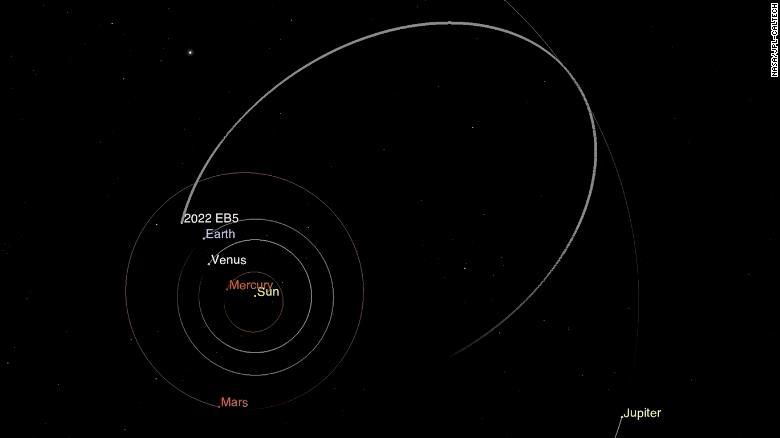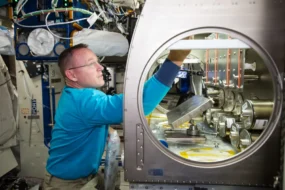Last week, an asteroid struck the Earth. And for only the fifth time ever, an astronomer found it—and tracked it—before it hit our planet.
There are constantly asteroids on a collision course with Earth. Most of these are small, and they burn up upon entering the Earth’s atmosphere. Big ones, like the one that killed the dinosaurs 66 million years ago, are more easily trackable. Potentially hazardous asteroids are tracked through NASA’s Planetary Defense Coordination Office, and there’s no known objects over 140m in diameter on track to hit Earth in the next hundred years. (Phew.)
Smaller asteroids, though, are harder to find. The first time an asteroid was discovered before landing was in 2008, when an astronomer at the Catalina Sky Survey discovered one 19 hours before impact. Three others, in 2014, 2018, and 2019, have been tracked before entering the atmosphere.
Asteroid 2022 EB5: Astronomer Krisztián Sárneczky was combing the sky using a 60cm telescope from Piszkéstető Observatory in Hungary when he noticed a small object moving quickly through the sky. The object’s rapid acceleration caught his interest, and he zoned in on the object, taking shorter exposures. Sárneczky reported his finding to the asteroid community. Less than two hours later, the asteroid entered the atmosphere.
The asteroid he found is called 2022 EB5. It was probably around 10 feet in diameter, and it fell to Earth in the Norwegian Sea north of Iceland. It is most likely the smallest asteroid out of the five that have been tracked before landing—about half the size of a giraffe, as the Daily Mail put it, for some reason.
Why is it so hard to find asteroids? The simple answer is that they are small, and the sky is big. It’s impossible with our current technology to track every small rock that comes near our planet. The smaller the object, the dimmer it appears in readings, and the harder it is to identify. It’s really a case of being in the right place at the right time and knowing exactly what to look for.
Do your part: If you see a fireball, you can report it to the International Meteor Organization to help scientists keep track of asteroid impacts.




